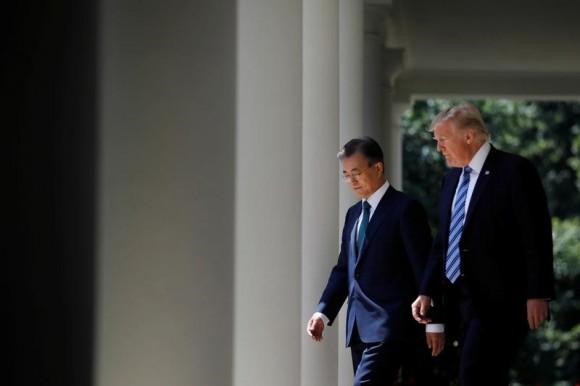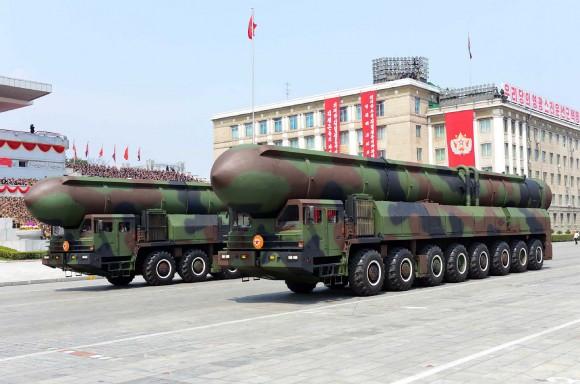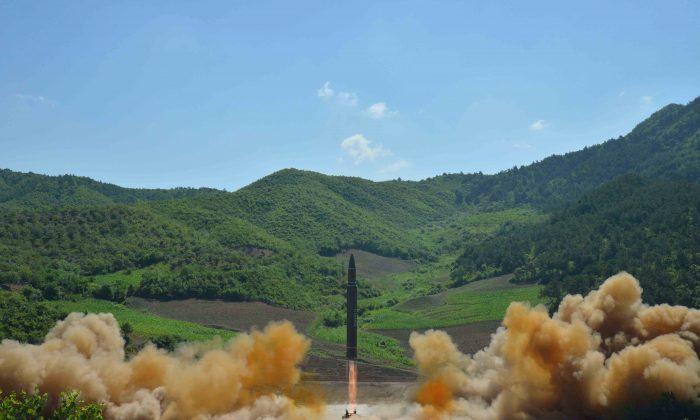SEOUL—U.S. President Donald Trump agreed with South Korean President Moon Jae-in to revise a joint treaty capping the development of the South’s ballistic missiles, Moon’s office said on Saturday, amid a standoff over North Korea’s missile and nuclear tests.
Trump also gave “conceptual” approval to the purchase by the South of billions of dollars of U.S. military hardware, the White House said.
The South wants to raise the missile cap to boost its defenses against the reclusive North, which is pursuing missile and nuclear weapons programs in defiance of international warnings and UN sanctions.
“The two leaders agreed to the principle of revising the missile guideline to a level desired by South Korea, sharing the view that it was necessary to strengthen South Korea’s defense capabilities in response to North Korea’s provocations and threats,” South Korea’s presidential Blue House said.

Impoverished North Korea and the rich, democratic South are technically still at war because their 1950-53 conflict ended in a truce, not a peace treaty. The North regularly threatens to destroy the South and its main ally, the United States.
North Korea sharply raised regional tension this week with the launch of its Hwasong-12 intermediate-range ballistic missile that flew over Japan and landed in the Pacific.

That followed the test launch of two long-range ballistic missiles in July in a sharply lofted trajectory that demonstrated a potential range of 10,000 km (6,000 miles) or more that would put many parts of the U.S. mainland within striking distance.
North Korea has been working to develop a nuclear-tipped missile capable of hitting the United States and has recently threatened to land missiles near the U.S. Pacific territory of Guam.
South Korea’s development of its ballistic missiles is limited to range of 800 km (500 miles) and payload weight of 500 kg (1,100 pounds) under a bilateral treaty revised in 2012.
South Korea has said it wants to revise the agreement to increase the cap on the payload.
The two countries agreed to the cap as part of a commitment to a voluntary international arms-control pact known as the Missile Technology Control Regime, aimed at limiting the proliferation missiles and nuclear weapons.
The two leaders pledged to continue to apply strong diplomatic and economic pressure on NorthKorea and to make all necessary preparations to defend against the growing threat by the North, the White House said.
The White House did not mention the voluntary bilateral agreement but said the two leaders agreed to strengthen their defense cooperation and South Korea’s defense capabilities.
Trump “provided his conceptual approval of planned purchases by South Korea of billions of dollars in American military equipment", the White House said.






Friends Read Free